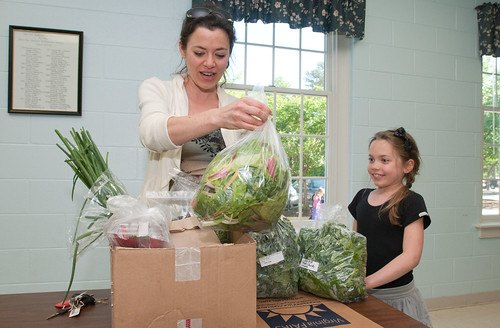
The market for local food – food that is produced, processed, distributed and sold within a specific region, say a radius of several hundred miles – is growing. Large, small and midsized farms are all tapping into it. Even better, new data suggest that these producers are employing more workers than they would be if they weren’t selling into local and regional markets.
Those are just a few of the take-home messages from a new report out last week by USDA’s Economic Research Service (ERS). Here’s a quick breakdown of some of the good news I took from this report:
1. Local markets are important for a lot of farmers. ERS finds that a whopping 40 percent of all vegetable, fruit and nut farms in the United States sell their products in local and regional markets. Nearly 110,000 farms across the nation are engaged. Some of these same farms are also selling into national or international markets.
For all of these farms, local markets are key to their bottom line. On average, these farms reported that local food sales accounted for 61 percent of their total sales. Almost two-thirds of the producers, regardless of size, reported that local food sales were at least seventy-five percent of their total sales!
2. The market for local foods goes well beyond direct-to-consumer sales. We already knew that direct sales from farms to consumers was growing – it rose by 215 percent between 1992 and 2007. But for the first time, the new ERS report also looks at what are called “intermediated marketing channels,” or sales from a farmer to a regional distributor, grocer, or restaurant, and then on to a consumer.
Combined, intermediated and direct local food sales totaled nearly $5 billion in 2008. Intermediated sales were three times larger than direct-to-consumer sales – so in other words, farm sales to regional distributors, grocers and restaurants are a big piece of the local food picture.
3. Local doesn’t necessarily mean small. Farms selling locally run the gamut from small to large – those with gross sales under $50,000 to those grossing over $250,000. Large farms are more likely to sell to restaurants, distributors and retailers than are small farms, and direct-to-consumer sales are evenly split between small, midsized and large farms.
4. Local means jobs. One out of every twelve jobs in the U.S. is associated with agriculture, and local food plays a role in that. The ERS report finds that fruit and vegetable farms selling into local and regional markets employ 13 fulltime workers per $1 million in revenue earned, for a total of 61,000 jobs in 2008. In comparison, fruit and vegetable farms not engaged in local food sales employed 3 fulltime workers per $1 million in revenue.
Why is on-farm job creation for producers selling locally so much higher? It will take more analysis to understand these differences, but the take-home message is clear: helping farmers and small businesses develop the infrastructure to produce, store, process, distribute and sell food to consumers in their region is an important component of the work that USDA does to keep and grow jobs in agriculture overall.

